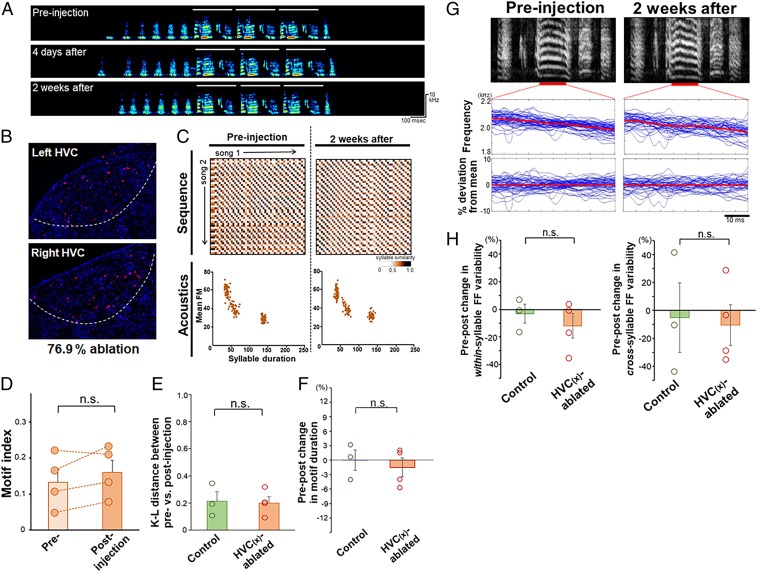Fig. 5.
Nonobvious change in song structure by ablation of HVC(X) neurons in adults. (A) Representative spectrogram of birds that were ablated in HVC(X) neurons in adults. The white bars represent the motif structure of songs. (B) Example of the extent of HVC(X) ablation in an ablated adult (with 76.9% ablation) as shown in A and C. NTS (red) and DAPI (blue). (C) Syllable sequence and acoustic stability before and after ablation of HVC(X) neurons. Sequential patterns are shown as SSMs and acoustics as a scatter density plot of syllable duration vs. mean FM (n = 150 syllables). (D) No effect of HVC(X) ablation on the song motif index of adult zebra finches. Each point corresponds to an individual bird. (E) No effect of HVC(X) ablation on syllable acoustics measured by the K–L distance of syllable scatter density plots (duration vs. mean FM) between preinjection and postinjection time points (n = 3 controls, n = 4 ablated birds; Student’s t test: n.s., P > 0.05). (F) Pre–post change in motif duration between control and HVC(X)-ablated birds (Student’s t test: n.s., P > 0.05). (G) Example of an FF trajectory of a syllable in preinjection (Top Left) and 2 wk postinjection (Top Right) of songs from an HVC(X)-ablated adult, expressed as raw frequency traces (Middle) and percent deviation from the within-rendition mean (Bottom). The blue and red lines indicate each rendition and the mean across renditions, respectively. (H) Pre–post changes in within- and cross-rendition syllable variability in FF between control and HVC(X)-ablated birds (Student’s t test: n.s., P > 0.05). Mean + SEM for all graphs.

